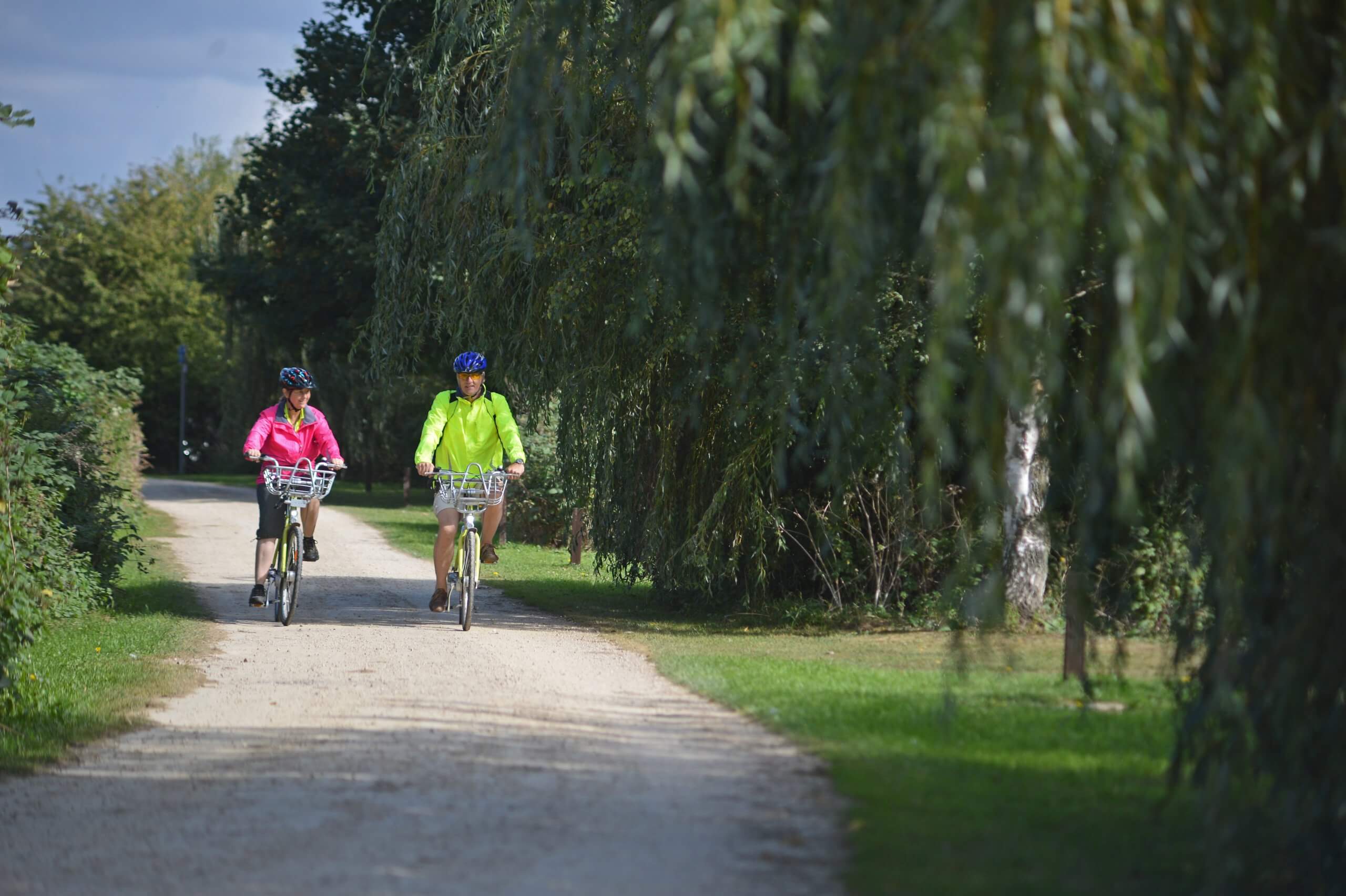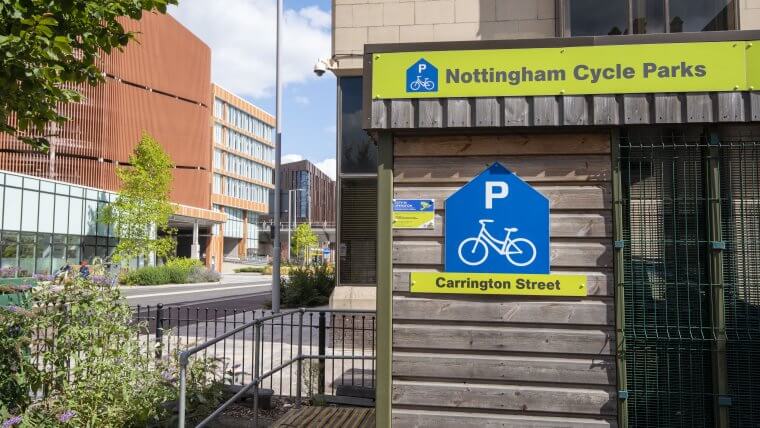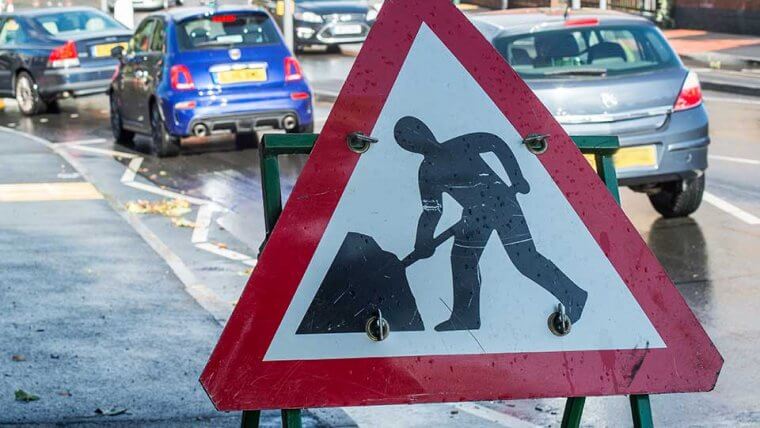3 June

The Government has announced £2.5m of new funding for Nottingham to introduce temporary measures to encourage walking and cycling as Covid restrictions are eased.
The City Council has already invested in facilities for walking and cycling in Nottingham. There is extensive pedestrianisation in the city centre, with more planned, and many city centre pavements have already been widened as part of widespread improvements. This will make social distancing easier as more people return to work, as well as increasingly for other activities as shops and cafes begin to reopen.
Following extensive investment in cycling infrastructure, there is already a network of around 300 miles of paths and roads promoted for cycling to choose from, 80 miles of which are traffic-free. Plans are in place to add or improve a further 87 miles of the cycle network over the next 15 years, with £40 million of funding secured through the Government’s Transforming Cities Fund.
The council has also supported the Nottingham Bike Aid scheme, an initiative to supply key workers with free bikes, and its Citycard bike hire is still operating, with extra cleansing and sanitisation of bikes and docking stations in place.
New temporary measures the council is planning to use the Government funding for include:
• New or improved cycle facilities – Temporary measures can be installed until planned permanent cycle lanes can be built. This may involve extending existing bus lanes for bikes or creating standalone facilities. Other planned works to build new or improved cycle lanes put on hold at the start of the lockdown will be restarted and fast-tracked, including improvements along the ring road. Additional cycle parking facilities will be provided at key destinations and old cycle facilities repaired and improved.
• Decluttering and widened footways – Removing unnecessary barrier rails and other clutter will give pedestrians more space to walk. Areas include the city centre and local district centres like Bulwell, Clifton and Hyson Green. To support this, temporary pavement widening will also be considered in areas of high pedestrian flow, such as outside main shopping areas.
• Side road closures – Closure of some minor roads to through traffic to create attractive low-traffic neighbourhoods, while maintaining essential access.
• Providing more time to cross main roads – Extending the ‘green man’ time and shortening the phasing at traffic signalled junctions will give pedestrians and cyclists more time to cross main roads, reducing bunching up. Pelican and Toucan crossings in the city centre have already been adjusted to reduce the time it takes for the green man to light up, making it easier and quicker to cross. This quick win is being extended across the entire city.
• Park & Ride facilities – Creating improved parking, cycling and walking facilities at the Queens Drive and Racecourse Park & Ride sites, to encourage drivers to cycle or walk the last leg of their journey.
• 20mph speed limits – Extending the city’s already extensive network of 20mph streets to include the city centre and other local district centres. This will make these areas safer and a more attractive environment for cycling and walking.
• School Streets – Creating ‘School Streets’ around the city which closes some roads outside certain schools during drop-off and pick-up times. This is intended to encourage cycling and walking to school, improve health and air quality. A trial is expected to get underway from September.
• Community Cycle Centres – Providing regular pop-up cycle events in partnership with Ridewise across the city for advice and free cycle training for all abilities, from the end of June. Sessions will be through online support, video conferencing and socially distanced training supported by online videos of key cycle routes to familiarise people ahead of making new journeys. This should help families get used to cycling together, ready for the return to school, linked to refreshed Bikeability training.
• Workplace Travel Service – Continuing support for organisations and businesses to help employees commute to work by bike. This will offer a mix of Dr Bike via click and collect or pre-booked appointment sessions, journey buddying advice and route planning online and by phone, supported by route mapping and commuter route videos, cycle training delivered online and socially distanced sessions and online bike maintenance sessions. There will also be training for ebikes and use of cargo bikes and ecargo bikes. All available through www.transportnottingham.com.
• Jobseeker support package – Helping people back into work with journey planning sessions, free services offering a mix of a reconditioned bike with helmet, cycle training, basic bike mechanics training, Build a Bike courses, along with Dr Bike services at key destinations and events.
Further details will be available when the council has agreed its programme with the Department for Transport.
Councillor Adele Williams, Nottingham City Council’s Portfolio Holder for Local Transport, said: “The council has always been committed to the promotion of walking and cycling, with great facilities already in place and even more in the pipeline. We have been working on plans to make it even easier for people to get around the city by foot or bike in response to the current crisis. Now the Government has confirmed Nottingham’s share of the additional Government funding, we can move ahead with temporary arrangements to help keep Nottingham moving safely during this ongoing pandemic.
“Many local households don’t have access to a car, and lots of people in Nottingham can’t work from home and will need to travel when employment starts up again. It’s vital that we clear the way to make cycling and walking safe and accessible options.
“Walking and cycling along with public transport are at the heart of our approaches to economic development, social and health ambitions for our city. Our response to COVID will be underpinned by those principles. To keep our city moving, bus lanes will be kept running freely, space made available for people to safely socially distance, and roadspace changes carried out to support walking and cycling that people will start to see in the coming weeks and months.”




